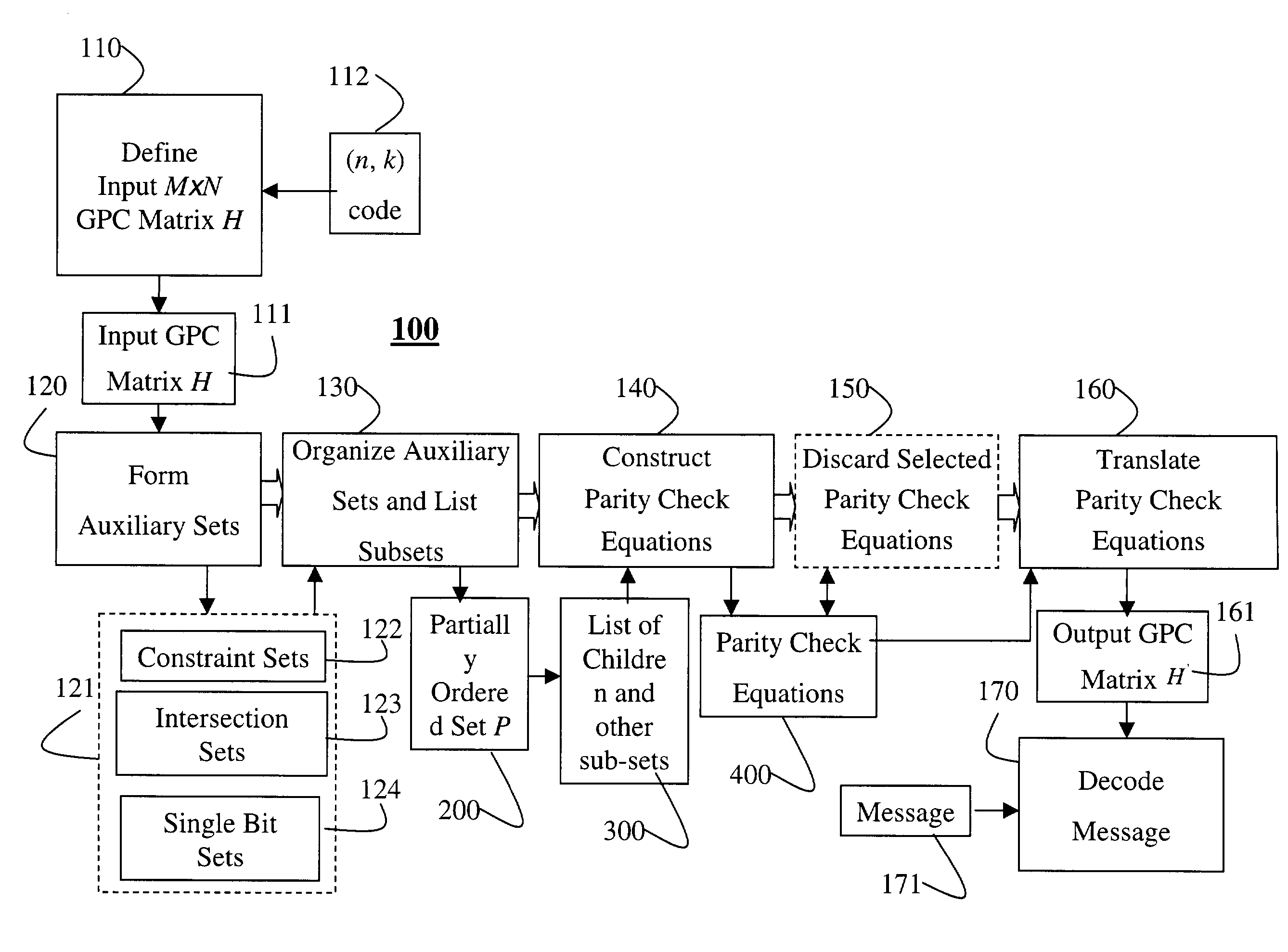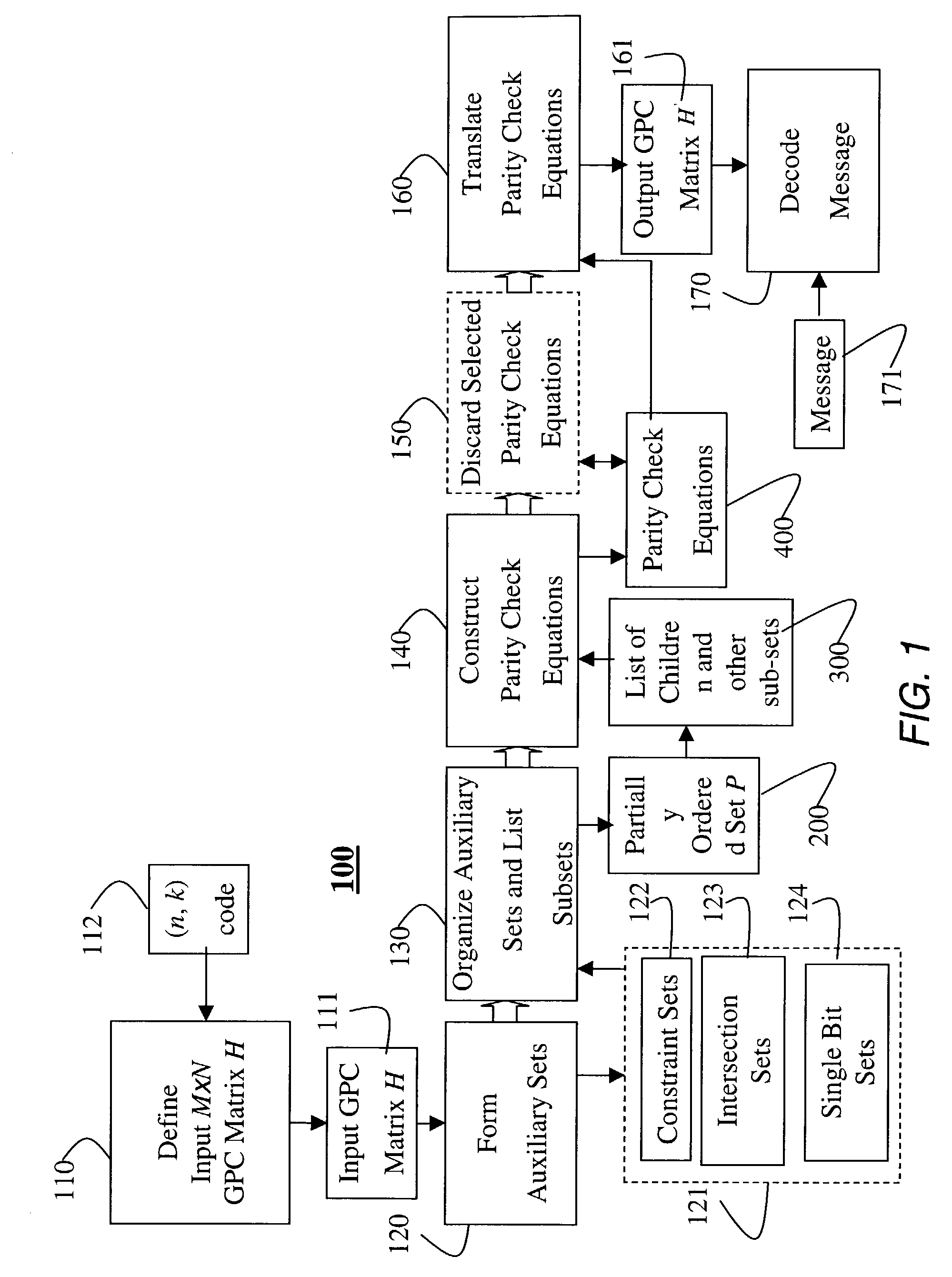Transforming generalized parity check matrices for error-correcting codes
a generalized parity check and error-correcting technology, applied in the field of data storage and data transmission error-correcting codes, can solve the problems of inpracticality of ml decoding methods, difficulty in decoding corrupted messages, storage media, etc., and achieve the effect of improving performan
- Summary
- Abstract
- Description
- Claims
- Application Information
AI Technical Summary
Benefits of technology
Problems solved by technology
Method used
Image
Examples
Embodiment Construction
[0037]FIG. 1 shows the steps of a method 100 for transforming a generalized parity check matrix for error-correcting codes (ECC) according to our invention. In our method 100, we first define 110 an input M×N GPC matrix H 111 representing an (n, k) code 112. The transformation 100 generates an output M′×N′ GPC matrix H′161 representing the identical code 112. The value N′ is greater than the value N because we retain all the variables used in the original representation, and add state variable bits. The output matrix 161 can be used to decode 170 a message 171 with better a better performance than would be obtained if the original input matrix 111 was used.
[0038]Step 120 of our method forms three different auxiliary sets S 121 of bits that represent the overall parity of sets of the N bits corresponding to columns of the input GPC matrix 111. We index the N bits by integers from 1 to N. We denote the value of the ith bit by xi, where xi can take on the values 0 or 1. For any auxilia...
PUM
 Login to View More
Login to View More Abstract
Description
Claims
Application Information
 Login to View More
Login to View More - R&D
- Intellectual Property
- Life Sciences
- Materials
- Tech Scout
- Unparalleled Data Quality
- Higher Quality Content
- 60% Fewer Hallucinations
Browse by: Latest US Patents, China's latest patents, Technical Efficacy Thesaurus, Application Domain, Technology Topic, Popular Technical Reports.
© 2025 PatSnap. All rights reserved.Legal|Privacy policy|Modern Slavery Act Transparency Statement|Sitemap|About US| Contact US: help@patsnap.com



